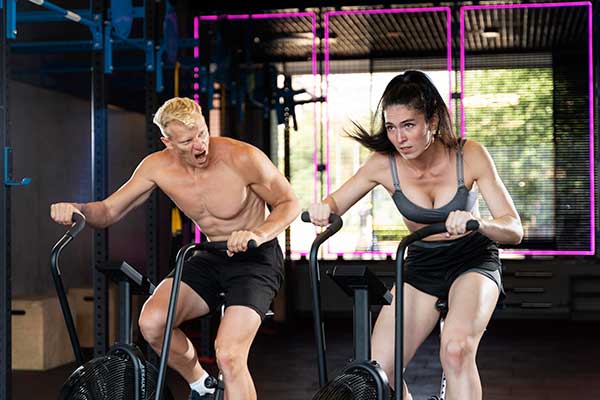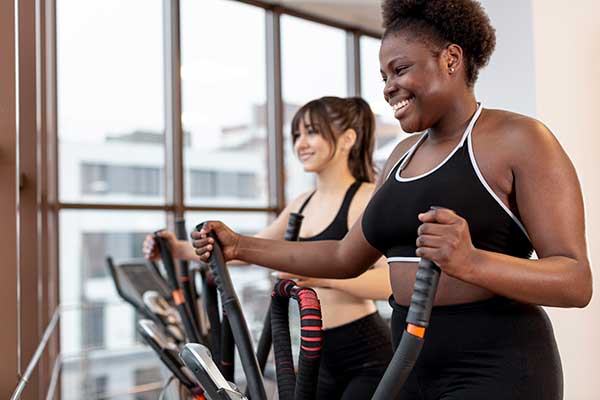What is a Good 30 Minute Cardio Workout to do at Home
Are you looking for an effective way to get your heart pumping without stepping foot outside? A good 30 minute cardio workout to do at home can fit seamlessly into your busy schedule while delivering impressive results. Whether you’re pressed for time or simply prefer the convenience of working out in your own space, incorporating cardio routines into your day is not only achievable but also enjoyable. With so many options available, you can easily find a workout that matches your energy level and keeps you motivated. Ready to break a sweat? Let’s explore the exciting world of at-home cardio workouts!
Benefits of Cardio Workouts
Cardio workouts offer a myriad of benefits that extend beyond just burning calories. Engaging in regular cardiovascular exercise strengthens your heart, improving blood circulation and reducing the risk of heart disease.
These workouts also boost your lung capacity. As you challenge yourself, your body learns to use oxygen more efficiently, enhancing overall endurance.
Moreover, cardio is known for its mood-lifting effects. It releases endorphins—those feel-good hormones—which can reduce stress and anxiety levels significantly.
Another advantage lies in weight management. Consistent cardio helps regulate metabolism and aids in shedding excess pounds when combined with a balanced diet.
It promotes better sleep patterns. Many people find that after an invigorating workout session, they enjoy deeper and more restful sleep at night.
The Importance of a 30 Minute Workout
Finding time to exercise can be a challenge, especially in our busy lives. A 30-minute workout offers an efficient solution without overwhelming your schedule.
This duration is long enough to elevate your heart rate and promote cardiovascular health while remaining manageable for beginners. Shorter sessions can still provide significant benefits if done consistently.
A half-hour workout also fits neatly into daily routines, whether it’s during lunch breaks or after work. It allows you to break a sweat without feeling like you’re sacrificing hours of your day.
Moreover, engaging in regular short workouts helps establish a habit that can lead to greater fitness goals over time. Keeping it simple makes it easier to stay committed and motivated on the journey towards better health. Each session counts toward building endurance and strength, making every minute valuable in its own right.
Warm-Up Exercises
Warming up is essential before diving into any workout. It prepares your body and minimizes the risk of injury. Spend a few minutes gradually increasing your heart rate with dynamic movements.
Start with arm circles to loosen those shoulders. Move on to leg swings, gently stretching out your hip flexors. Incorporate some high knees or butt kicks to engage your core and legs.
Don’t forget side lunges; they activate multiple muscle groups while improving flexibility. A quick set of jumping jacks can also get the blood pumping throughout your entire body.
These simple exercises signal to your muscles that it’s time for action. They enhance performance during cardio workouts, making them more effective and enjoyable. A proper warm-up sets the tone for what’s ahead, so never skip this crucial step in your routine!
5 Different Cardio Workouts to do at Home:
High-Intensity Interval Training (HIIT) is perfect for those who want a quick but effective workout. Alternate between bursts of intense activity and short rest periods. You can design your own routine with exercises like burpees, jumping jacks, and mountain climbers.
Jumping rope isn’t just for kids; it’s an excellent cardio workout that improves coordination too. Just a few minutes can elevate your heart rate significantly while also being fun to do.
Dancing allows you to express yourself while breaking a sweat. Put on your favorite playlist and let loose in the comfort of your living room.
A stair workout utilizes what you already have at home. Climb up and down stairs for an engaging way to get your heart pumping without any equipment needed.
Circuit training combines different movements into one session. Incorporate lunges, squats, push-ups, and planks in a sequence that keeps you moving nonstop.
A. High-Intensity Interval Training (HIIT)
High-Intensity Interval Training, or HIIT, offers a dynamic approach to cardio that can be done right at home. This workout alternates between short bursts of intense activity and brief recovery periods. It’s perfect for those who want maximum benefits in minimal time.
You don’t need fancy equipment; your body weight is often enough. Think jumping jacks, burpees, or mountain climbers—each movement pushes your limits while keeping the heart rate high.
Typically lasting around 20 to 30 seconds for each intense interval followed by equal rest time makes it easy to tailor the workout based on fitness levels.
HIIT not only improves cardiovascular health but also boosts metabolism long after you’ve finished exercising. Plus, its variety keeps boredom at bay. You can mix and match different exercises every session!
B. Jumping Rope
Jumping rope is a fantastic cardio workout that you can easily do at home. It’s not only fun but also highly effective for burning calories and improving coordination.
Just grab a jump rope, and you’re ready to go. You can adjust the intensity by changing your speed or adding tricks like double unders. For those who want variety, try alternating between regular jumps and high knees to keep things interesting.
This workout engages multiple muscle groups, including your legs, core, and arms. You’ll be surprised at how quickly it elevates your heart rate.
Best of all? A jump rope takes up minimal space and is budget-friendly. It’s an excellent option if you’re tight on time or resources yet still want an impactful exercise regimen to incorporate into your daily routine.
C. Dancing
Dancing is a fantastic way to elevate your heart rate while having fun. It’s versatile and you can do it anywhere—no fancy equipment required.
Put on your favorite playlist and let loose. Whether it’s hip-hop, salsa, or even Zumba, dancing engages various muscle groups and boosts endurance.
You don’t need to be a pro; just move your body! The rhythm will guide you. Plus, dance workouts often incorporate cardio intervals that really get the blood pumping.
One of the greatest aspects of dancing is its ability to lift your mood. With every beat, stress melts away as endorphins flood in. This makes it not just an effective workout but also a therapeutic release.
So go ahead—shake those hips! You’ll hardly notice you’re working out when you’re lost in the music.
D. Stair Workout
Stair workouts are an effective and accessible way to get your heart pumping. You don’t need fancy equipment; just find a set of stairs in your home or nearby.
Start with basic stair climbing. Step up, then step down, using the full range of motion. This simple action engages multiple muscle groups while elevating your heart rate.
For added intensity, try running up the stairs instead of walking. The quick bursts will challenge your endurance and burn extra calories.
Incorporate side steps or lateral movements to engage different muscles. This variation can help improve coordination and balance as well.
As you become more comfortable, consider adding jumps: leap onto the first step from the ground for a powerful plyometric exercise that builds strength and speed.
Always listen to your body! Make sure not to push yourself too hard—adapt these exercises based on your fitness level for optimal results.
E. Circuit Training
Circuit training is an efficient way to get your heart pumping and build strength simultaneously. It involves performing a series of exercises back-to-back, usually with minimal rest in between.
You can target different muscle groups while keeping the intensity high. For example, you might rotate through jumping jacks, push-ups, squats, and mountain climbers. This approach keeps things dynamic and engaging.
Setting up a circuit workout at home requires little to no equipment. You can use body weight or grab household items like water bottles for added resistance.
Aim for 30 seconds of work followed by 15 seconds of rest as you transition from one exercise to the next. Repeat the circuit multiple times based on your fitness level.
This method not only boosts cardiovascular health but also ramps up metabolism long after you’ve finished exercising. It’s perfect for those short on time yet eager to maximize their workouts.
Cool Down and Stretching
After an intense cardio session, it’s crucial to cool down properly. This helps your heart rate gradually return to normal and prevents dizziness or fainting.
Start with gentle movements. Walking in place for a couple of minutes is an excellent way to ease out of your workout.
Next, incorporate stretching exercises. Focus on the major muscle groups you engaged during your cardio routine. Stretching improves flexibility and reduces muscle tightness.
Hold each stretch for at least 15-30 seconds. Feel the tension release as you breathe deeply.
Don’t rush through this phase; it’s just as important as the workout itself. Proper cooldown and stretching can enhance recovery and prepare your body for future workouts.
Additionally, take time to hydrate after exercising to replenish fluids lost during physical activity.
Tips for Staying Motivated and Consistent
Staying motivated can be a challenge, especially when working out at home. Setting clear and achievable goals helps create a sense of purpose. Break down larger objectives into smaller milestones for an easier path to success.
Establishing a routine is key. Pick specific days and times for your cardio workouts, treating them like important appointments. Consistency breeds habit.
Find activities you genuinely enjoy. If jumping rope feels tedious, try dancing or HIIT instead. Experiment until you uncover what sparks joy in your fitness journey.
Connecting with others offers support too. Join online communities where members share their progress and challenges. Engaging with like-minded individuals provides motivation and accountability.
Track your workouts using apps or journals to visualize progress over time. Celebrate small victories; they keep the momentum going!
Conclusion
When it comes to finding a good 30 minute cardio workout to do at home, the options are plentiful and effective. Incorporating cardio into your routine can enhance your overall health, boost your mood, and help you maintain or lose weight. The key is consistency and variety in your workouts.
A dedicated half-hour session can fit seamlessly into even the busiest schedules. Whether you choose high-intensity interval training, jumping rope, dancing, stair workouts or circuit training, each option offers unique benefits that keep things interesting.
Don’t forget to warm up before diving into any workout and cool down afterward with some gentle stretches. These practices not only prepare your body for exercise but also aid recovery.
Maintaining motivation might be challenging at times; however, setting small goals or working out with friends virtually can make a significant difference. Remember that every little bit counts towards building a healthier lifestyle.
Choosing what feels right for you is essential. With just thirty minutes of focused effort each day at home, you’re well on your way to achieving fitness success while enjoying the process along the journey toward improved health.
- About the Author
- Latest Posts
Johnnie D. Jackow Sr., the founder and CEO of Total Body Fitness, Worldwide, has a long-standing career in the fitness industry. He began as a certified personal trainer in the mid-90s and soon after authored his first weight loss book in 1998. This led to the launch of Total Body Fitness, Nationwide in the USA at the same time. Johnnie gained recognition as the fitness guru of his time, running infomercials on local TV late at night in Houston, Texas. Over the years, he has helped more than 40,000 individuals from all over the world achieve their health and fitness goals. With over 60,000 hours of documented training in integrative functional medicine, he completed his PhD in human physiology in 2010. His primary objective is to assist people in reaching their health and fitness goals through alternative approaches rather than relying solely on conventional medicine and pharmaceutical drugs. Today, with almost three decades of experience under his belt, Johnnie continues to be a leader in health and fitness.








